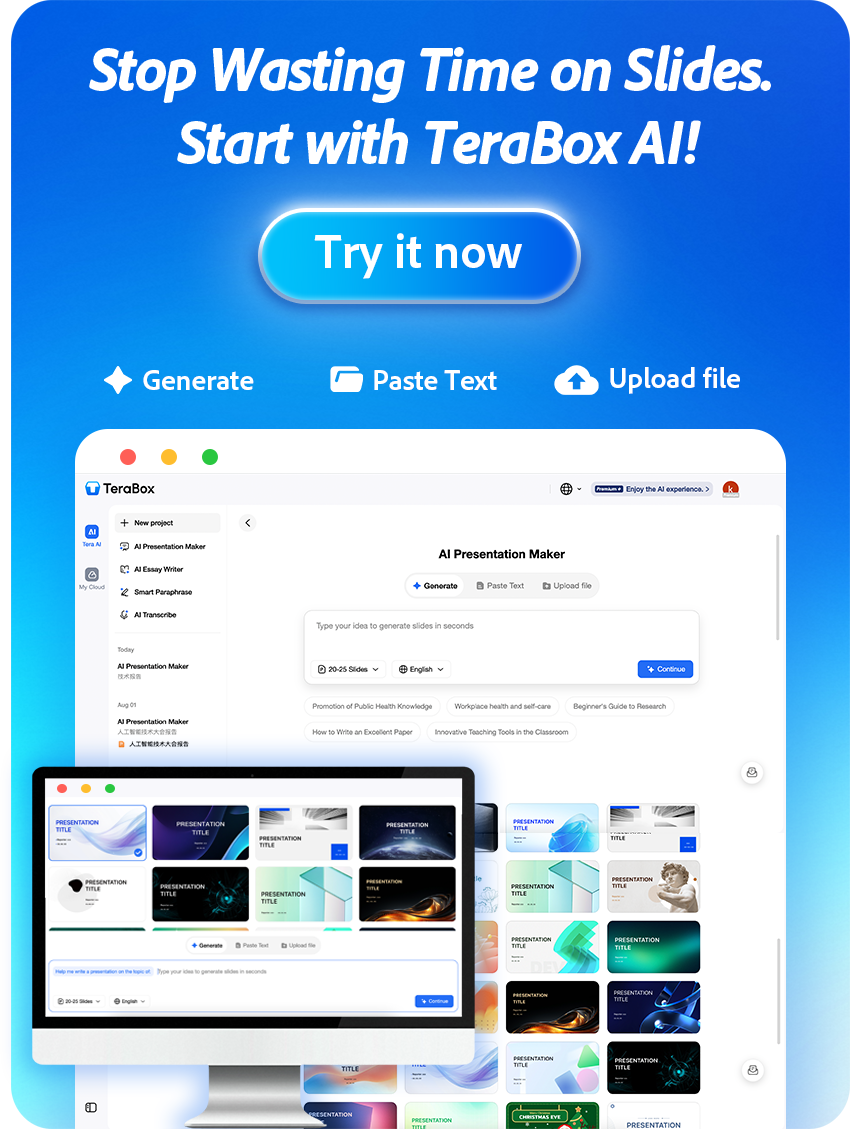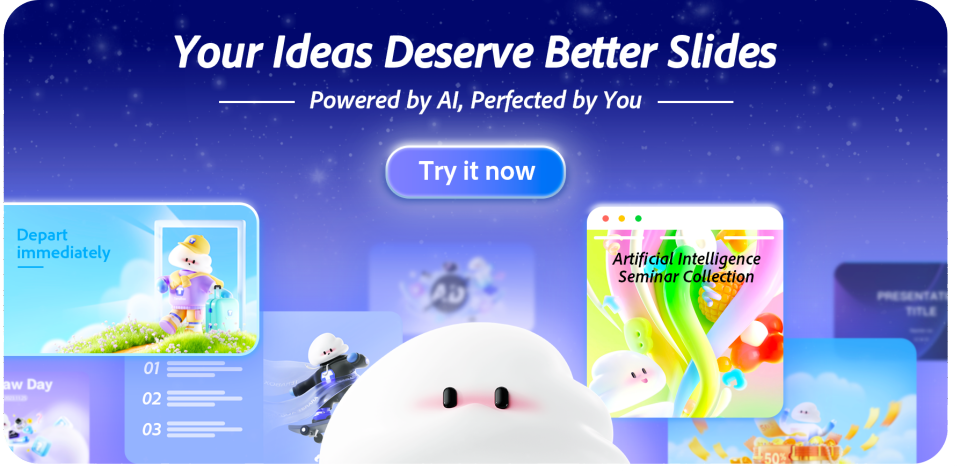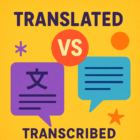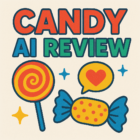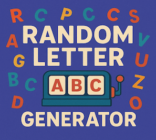Are you tired of the limitations posed by Janitor AI? You’re not alone. In 2025 many users are searching for janitor ai alternatives because model updates, evolving privacy rules, and a surge in roleplay and storytelling use cases have exposed gaps — especially around deep customization and persistent memory. If you want more freedom to craft personalities, longer-term memory that remembers preferences and story arcs, or a safer approach to NSFW handling, the right alternative can transform your AI experience.
This guide compares the top 10 Janitor AI alternatives and highlights which platforms are best for roleplay, companionship-style chat, or productivity assistants — including reliable janitor ai free options. Jump to the comparison table to pick a platform fast, or read on to learn how to evaluate customization, memory, privacy, and pricing for your needs.
In 2025, more users want Janitor AI alternatives because shifting model capabilities, tighter privacy expectations, and a growing community of roleplayers and writers have exposed limits in one-size-fits-all chat tools. People are searching now for platforms that do two things particularly well: deeper customization to craft distinct personalities and reliable memory that preserves context across sessions.
This article walks through the leading janitor ai alternatives, comparing core features, pricing tiers, and real-world use cases so you can decide which platforms match your goals. Expect practical guidance on customization depth and intelligent memory (what it stores, how persistent it is, and whether it’s editable/exportable), plus tips for maximizing personalization and privacy in your chats.
The video below demonstrates a quick tour of persona creation and memory settings on a representative platform; use it to see how customization and memory work together in practice:
What Are Janitor AI Alternatives
Exploring alternatives to janitor ai means looking beyond a single chat interface to platforms that give users far more control over how characters behave, remember information, and handle sensitive content. These alternatives are designed to address specific gaps many users want fixed in 2025: greater flexibility in persona creation, persistent memory across sessions, deeper customization of responses, and clearer NSFW handling and privacy controls.
Key differences from Janitor AI typically include:
- Flexibility: Advanced persona scripting, tone sliders, multi-character scenes, and importable backstories let creators shape behavior more precisely.
- Memory: Options range from session-only memory to editable, long-term memory that remembers preferences, story arcs, or productivity data and can sometimes be exported or cleared on demand.
- Customization: From appearance and voice to dialogue rules and conditional triggers, alternatives offer richer character creation tools than one-size-fits-all chat models.
- NSFW handling & privacy: Clear policy settings, opt-in adult modes, and granular privacy controls give users safer ways to manage mature content and personal data.
Use cases make these differences tangible: a novelist can rely on long-term memory to preserve plot threads across weeks of writing; a roleplayer can create multiple interlocking characters with distinct voices and continuity; and someone using AI for companionship can prioritize platforms that remember preferences and maintain emotional continuity across conversations.

How to Evaluate the Best Janitor AI Alternatives
When choosing suitable Janitor AI alternatives, focus on measurable, actionable criteria so you can quickly compare platforms and pick the right fit for your workflows or stories. Below is a practical checklist with examples and a simple 1–5 quick-score you can use while testing each platform.
1)Customization depth
What to look for: persona templates, tone sliders, conditional dialogue rules, multi-character control, importable backstories, and voice/appearance options.
Example: A good customization score (4–5) means you can create a character with a backstory, set tone and verbosity, control how it responds to triggers, and save templates for reuse.
2)Memory type and reliability
What to look for: session-only memory vs. editable long-term memory, ability to export or back up memory, clear retention policies, and options to edit or delete stored facts.
Example: For storytelling or ongoing roleplay, prioritize platforms with long-term, editable memory that preserves story arcs and user preferences across conversations — this maximizes coherent interactions over time.
3)Interface usability and speed
What to look for: clean UI, quick load and response times, keyboard shortcuts, template galleries, and mobile/desktop parity.
Example: If you write live with an AI or run fast-paced roleplay, a responsive interface and low-latency replies matter more than extra bells-and-whistles. Rate the interface 1–5 for clarity and responsiveness.
4)Privacy & NSFW handling
What to look for: explicit privacy policy, data storage location and encryption, user controls for memory and sharing, and clear NSFW policy with opt-in or gated adult modes.
Example: Creators who handle personal data or adult content should prefer platforms that let them control what is saved, export memories, and toggle NSFW settings — this protects privacy and reduces compliance risks.
5)Free vs paid features
What to look for: what the free tier includes (memory, customization, number of characters), what’s gated behind premium plans (long-term memory, unlimited characters, voice or API access), and whether pricing supports your use case (casual roleplay vs professional writing).
Example: If you’re testing, choose a platform with a capable free tier (basic memory and customization). Upgrade only if premium adds critical features like exportable memory, multi-character conversations, or faster models.

Quick selection tip: If your priority is long-form storytelling and continuity, prioritize memory reliability; for one-off roleplay or character experiments, prioritize customization depth. While testing, score each platform 1–5 on the five criteria above to make a side-by-side comparison.
Top 10 Janitor AI Alternatives Overview
The landscape of AI platforms in 2025 gives users a broad selection of janitor ai alternatives tuned for different goals — from deep character creation to persistent memory for long-form storytelling. Below we summarize ten notable platforms and then provide a compact comparison table so you can scan customization, memory, free-tier availability, and the best use cases at a glance.
Short highlights: DreamGen and Character Forge lean into advanced customization and persona tooling; NovelAI and platforms with strong memory systems favor writers and ongoing story arcs; Replika and other companionship-focused chatbots emphasize conversational continuity and emotional support. Pricing ranges from fully free community-driven models to paid subscriptions or premium plans offering exportable memory, voice, and API access.
| Platform | Customization | Memory | Free Tier | Best For |
|---|---|---|---|---|
| Dream Gen | High — templates, tone sliders, multi-character scenes | Session + optional cloud profiles (editable) | Limited free access | Character creation & roleplay ($$) |
| Character Forge | High — deep persona scripting, conditional replies | Session-based with profile save | Trial/free tier | Advanced roleplay & multi-character storytelling ($$) |
| StoryCrafter | High — plot tools, backstory import | Long-term story memory (editable) | Free starter plan | Novelists and interactive fiction ($$) |
| NovelAI | Medium — story-focused customization | Strong long-term memory for arcs (exportable on some plans) | Paid-first but trial options | Long-form storytelling & worldbuilding ($$–$$$) |
| Replika AI | Medium — persona and conversation tuning | Persistent memory of preferences; editable | Free with premium membership | Companionship-style chat & emotional support ($) |
| Krush.chat | Medium-High — trait editing, voice options | Cloud memory with user controls | Generous free tier | Balanced customization + memory for creators ($) |
| Talkie AI | Medium — easy UI, basic persona options | Session + configurable persistent memory | Free tier available | Casual conversation, productivity assistants ($) |
| Soulkyn | Low-Medium — simpler persona tools | Good context retention across interactions | Free/community tier | Ongoing roleplay continuity & hobbyists (Free–$) |
| DreamChat (community) | Varies — community-made characters | Mostly session; some community profiles saved | Free | Experimentation, free chats, and community sharing (Free) |
| Voice+ (example voice-enabled) | Medium — persona + voice customization | Persistent preferences; voice profiles | Limited free trial | Voice interactions, streaming, and audio roleplay ($$–$$$) |
How to read this table: “Customization” signals how finely you can craft characters (appearance, personality, rules, tone). “Memory” shows whether the platform supports only session context, editable long-term memory, or exportable backups. “Free Tier” indicates whether you can meaningfully test the platform without paying. “Best For” gives a quick user-focused recommendation (storytelling, roleplay, companionship, productivity).
Quick pricing note: free = fully free or generous free tier; $ = low-cost monthly; $$ = mid-range subscription; $$$ = premium or enterprise pricing. Also check each platform’s memory storage (local vs cloud) and whether export/backup is supported before committing, particularly if you value privacy or want to migrate data between services.

Alternatives Excelling in Advanced Customization
When comparing AI platforms, advanced customization is what lets you turn a generic chatbot into a rich, believable character. Platforms like DreamGen, Character Forge, and StoryCrafter prioritize tools that let creators control voice, backstory, and behavior so characters feel consistent and unique across conversations.
What advanced customization looks like: persona templates you can clone and tweak, tone sliders (from terse to verbose), multi-character dialogue control, conditional triggers (if X happens, respond with Y), importable backstories, and role-specific response rules. These features give you the freedom to design characters with distinct personalities, dialogue styles, and predictable behaviors — ideal for storytelling, roleplay, or specialized productivity bots.
Practical tips (quick wins):
- Tone switching: Create named tone presets (e.g., “concise reporter,” “romantic narrator”) and swap them mid-session to shift mood without rebuilding the character.
- Multi-character storytelling: Use multi-character controls to script interactions between two or more personas; save each persona’s voice profile so conversations stay consistent over time.
- Conditional triggers: Add simple “if/then” rules to keep characters in-role (e.g., if the user asks about backstory, reply with a short summary; if the user says “angry,” switch to terse responses).
Below is a focused comparison of platforms known for deep persona creation and roleplay flexibility — with a short “Best for” hint to help you choose quickly.
| Platform | Advanced Customization Options | Character Libraries | Roleplay Features | Best For |
|---|---|---|---|---|
| DreamGen | Extensive templates, tone & voice sliders, importable backstories | Large library of premade characters | Multi-character scenes, conditional responses | High-fidelity character design & roleplay |
| Character Forge | In-depth persona scripting, behavior rules | Customizable templates and trait sets | Dialogue branching and stateful characters | Complex roleplay scenarios and branching stories |
| StoryCrafter | Flexible plot and character tooling, exportable profiles | Robust customization for each role | Interactive narrative structures, scene management | Writers and interactive fiction creators |
Choosing one of these customization-first platforms is ideal when your priorities are rich characters, creative storytelling, and the ability to fine-tune every element of dialogue. For best results, combine persona templates with memory features (so backstories and voice choices persist) and test a multi-character scene to evaluate how naturally the platform manages interactions and role switches.

Alternatives Focused on Memory and Context Retention
Memory management and context retention are core differentiators for users who want conversations that feel coherent over days, weeks, or entire story arcs. Platforms like Replika AI, Soulkyn, and Character AI emphasize different memory models and controls so your characters can remember preferences, plot points, or ongoing roleplay states — which improves long-term engagement and emotional continuity.
Types of memory to watch for (quick primer):
- Short-term (session) — remembers context only while the chat is open; ideal for single-scene roleplay or brief Q&A.
- Medium-term (cross-session) — preserves details across multiple sessions (e.g., favorite topics, recent story beats); useful for regular users and continuing conversations.
- Long-term (profiles/backstories/exportable) — stores persistent facts, backstories, and preferences that can often be edited or exported; best for novelists, ongoing roleplay campaigns, or productivity assistants.
Practical examples — memory in action:
- A writer uses a platform with long-term memory so the AI remembers a character’s secret from chapter three and references it correctly in chapter eight, preserving plot continuity.
- A roleplayer creates multiple characters and relies on cross-session memory to keep each persona’s voice and relationships intact across weekly sessions.
- A productivity user teaches an assistant preferences (preferred task format, timezone, shorthand) and the AI applies those preferences every time they start a new conversation.
| Platform | Memory Management Features | Context Retention Capabilities | Engaging AI Interactions |
|---|---|---|---|
| Replika AI | Remembers past conversations and stated preferences; editable profile | Strong cross-session retention; adapts tone and suggestions over time | Creates deeper emotional continuity and companionship-style chat |
| Soulkyn | Records user choices and scene settings; profile saves | Maintains continuity across roleplay sessions | Encourages evolving characters and ongoing narratives |
| Character AI | Customizable memory toggles and profile facts | Recalls details from past sessions when enabled | Supports immersive, stateful character interactions |
Memory evaluation checklist (use while testing): reliability (does memory persist reliably between sessions?), editability (can you change or delete stored facts?), export/backup (can you back up or migrate memories?), control (is memory opt-in and granular?), and privacy/regulatory considerations (where is data stored, is it encrypted, does it comply with GDPR or local rules?). Also verify NSFW settings if you plan adult content — some platforms restrict mature content or require gated opt-in modes.
Choosing an AI alternative that prioritizes memory and context retention matters when your goals include long-form storytelling, recurring companionship chats, or complex roleplay. Strong memory features make interactions feel like a continuous relationship rather than disconnected chat snippets, improving both user satisfaction and narrative depth.
Balanced Alternatives (Customization + Memory)
Some platforms strike the sweet spot between deep customization and reliable memory, giving users creative freedom without sacrificing continuity. These balanced alternatives are ideal for writers, long-term roleplayers, and productivity users who need characters or assistants that both act and remember consistently. Krush.chat and Talkie AI are good examples: they provide editable persona settings plus persistent profiles so preferences and story beats carry over between sessions.
Quick comparison (pricing, interface, target users):
- Krush.chat — Pricing: mid-range ($$). Interface: modern web UI with robust editor and voice options. Target users: creators who want advanced trait editing plus dependable memory for ongoing campaigns.
- Talkie AI — Pricing: affordable ($). Interface: mobile-first, easy setup for quick persona tweaks and voice chat. Target users: casual roleplayers, conversational assistants, and users who want voice-enabled continuity.
Why choose a balanced platform?
- Balanced platforms save time: you don’t need to sacrifice persistent context for deep persona controls.
- They support a wider variety of use cases — from episodic storytelling to recurring companionship chats and productivity workflows.
- Pricing and feature sets tend to be flexible, with community and premium plans that scale with your needs.
One-line decision guide: if you need marathon storytelling or complex continuity, favor a memory-first platform; if you’re experimenting with character variety and tone, favor a customization-first platform — choose a balanced platform when you want both without compromise.
Practical Tips to Maximize Customization and Memory in Janitor AI Alternatives
Maximizing your experience with Janitor AI alternatives means combining efficient character creation with smart use of memory so conversations stay consistent and engaging. Below are three actionable tips with concrete mini-examples you can apply immediately.
1)Set default character templates to maximize creation efficiency
Create reusable templates so you don’t rebuild the same character from scratch. A simple template snippet might include:
<Name>: Arin
Role: Merchant / Info-broker
Tone: Wry, concise
Key traits: curious, guarded
Backstory: Runs a bookstall on the north pier; hides a coded journal.
Save that template and clone it when you need variations. This speeds up creation, supports consistent character voice across conversations, and streamlines testing multiple personas.
2)Use memory features to track preferences or story progress and maximize interaction consistency
Use memory like a key-value store to track important user or story facts. Example memory entries:
- favorite_drink = “iced coffee”
- current_story_arc = “Chapter 3: The Hidden Map”
- npc_relationships = {“Arin”:”ally”, “Mara”:”rival”}
With editable, long-term memory, the AI can recall these details across sessions to maintain narrative continuity and honor user preferences. When testing, verify edit/delete/export controls so you keep privacy and portability in check.
3)Adjust AI reply style and length to maximize character engagement
Most platforms let you tweak response style or verbosity. Try presets like:
- Concise — short, direct replies for fast-paced scenes.
- In-character verbose — flowing, descriptive replies for immersive storytelling.
- Utility — structured, checklist-style responses for productivity use.
Switch styles mid-session to change pacing or mood without rebuilding the persona. Also test response-length limits in free vs premium plans — some platforms reserve advanced style controls or longer outputs for paid tiers.
Quick-start checklist for a new persona (3–5 minutes):
- Create a basic template (name, role, tone).
- Add 3–5 memory keys (preferences, one plot hook, a relationship).
- Set a default reply style (concise or verbose).
- Run a short 5–10 message session and adjust tone or memory as needed.
- Save template and test it in a second session to confirm memory persistence.
CTA / experiment: Try a template + memory combo on one platform for two sessions (48–72 hours apart). Note differences in conversational consistency, character responses, and whether you need to upgrade to a premium plan for desired features. This quick experiment reveals how well a platform supports ongoing roleplay, storytelling, or productivity use.
Conclusion
Customization + memory are the two features that will most shape your experience with janitor ai alternatives in 2025: choose a memory-first platform for long-form storytelling and continuity, a customization-first platform for complex characters and roleplay, or a balanced platform when you need both.
Quick recommendations: NovelAI (storytelling & memory), Replika (companionship & emotional support), DreamGen / Character Forge (deep customization).
FAQs
1) What makes some Janitor AI alternatives better than others?
Better alternatives usually combine deeper customization (persona scripting, tone controls, multi-character tools) with reliable memory (cross-session persistence, editable facts). In practice, that means more consistent characters, richer conversations, and faster creation workflows — useful for writers, roleplayers, or anyone building ongoing assistants.
2) Can memory from Janitor AI alternatives be exported or backed up?
Many platforms now offer export or backup options, but this varies by provider and plan. Check whether memory is editable, whether you can export it as JSON or text, and whether backups are included in the free tier or behind a premium plan — exporting protects your work and makes migration between platforms possible.
3) Which free Janitor AI alternatives are most reliable?
Free options like Character AI and community-driven projects are useful for testing and casual chats; Replika has a capable free tier for basic companionship. For professional writing or persistent roleplay you’ll often need a paid plan for long-term memory, higher-quality models, or extended response length.
4) Are these alternatives suitable for NSFW content?
NSFW policies vary widely. Some platforms provide gated, opt-in adult modes and clear content controls; others forbid mature content entirely. Always review a platform’s NSFW and privacy policies before you create mature content to ensure compliance with community rules and to protect your privacy.
5)How to combine multiple Janitor AI alternatives for optimal results?
Use multiple platforms strategically—one for memory, another for fast responses. Export memory where possible to maintain continuity and leverage each tool’s strengths.
